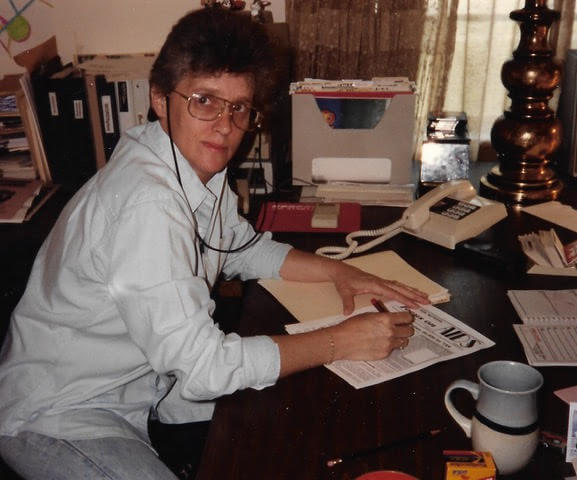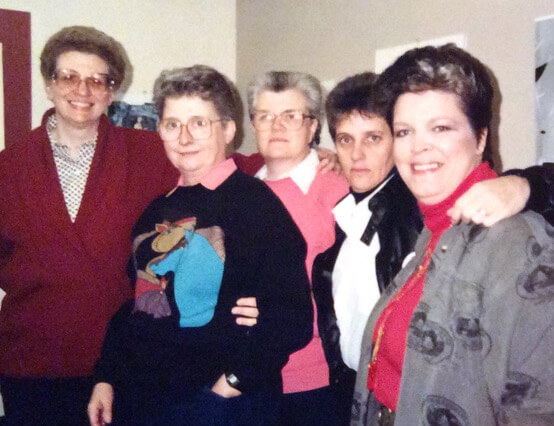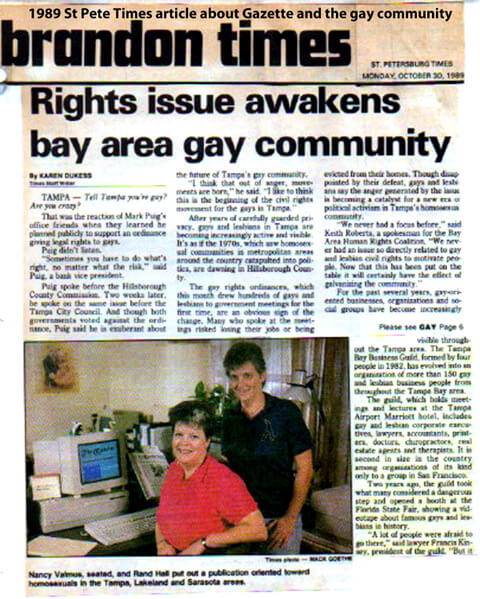The Gazette: Changing Lives One Issue at a Time

By Rand Hall
Back in the day, before internet, chatrooms, and Facebook, before lesbian celebrities and glossy LGBT magazines, before the second wave of feminists crashed onto the beach of “it’s a man’s world,” most lesbians were isolated in small social groups. During the 1960s and early 70s, lesbians were discovering ways to access the power of print to connect and grow their isolated groups, to share their stories, to build a culture and a movement. In cities and in small towns across the United States, women were giving birth to printing and publishing companies, magazines, and newsletters.

The impact of this was nowhere more remarkable than in the Bible Belt, the states across the south that were dominated by fundamentalist churches. But the Bible Belt was more than just a section of America. It was a weapon. In the rural and even metropolitan areas, the “bible belt” was drawn tightly around women’s lives. I saw that belt used as a whip and as a shackle to suppress, control, and silence women, to justify keeping women “in their place”—or more bluntly, “barefoot and pregnant.” It was also used to justify slavery and white supremacy.
I lived in Marietta, Georgia, in 1968. I never went to the market without seeing at least one woman with bruises and a black eye. It was “what was expected” by the women, by the community, and, most of all, by the church leaders. I moved back north because I did not want my daughter growing up to think that abuse of women was acceptable.
Beginning in college towns like Durham, North Carolina, and Atlanta, Georgia, brave lesbians, sometimes with a few heterosexual women, started to form organizations and produce newsletters. The concept of women having rights and power was nurtured and spread by hundreds of local publications, connecting previously silent women.
These little newsletters and magazines changed the lives of every woman who worked to create them, as well as those who just read them. Suddenly, events like lesbian dances, concerts, discussion groups, and demonstrations could draw large crowds.
The “isms” of race, sex, and class could be explored in a broader context than an individual experience. And our individual lesbian stories could be seen as part of the whole. After years of isolation, of being “just a few of us” or “the only one,” women were connecting, uniting for change and support.
The Gazette, Florida’s Gay & Lesbian News, Tampa, Florida
In 1987, my partner, Nancy Valmus, and I started a newspaper. Our first challenge was to find a printer. At each shop, we introduced ourselves and then Nancy said, “We are looking for a printer for our gay and lesbian newspaper. If that is a problem for you, we need to know up front.” In the 20 years we published the Gazette, only one person objected, saying, “I’d do it, but if my preacher knew, he’d kill me.”
I handled the news, reporters and photographers, photo spreads, and editing. Nancy, miracle that she was, handled the business end—advertising, printing, dealing with vendors, collections, etc. We both did page layout and graphics.

We ran no “phone sex” ads or suggestive graphics, the financial mainstay of almost all gay publications. From the beginning we wanted something lesbians and gay men could bring home to their mothers to share the important events affecting their lives. We wanted people to be proud to share the Gazette with family and co-workers.
We often heard that the Gazette changed the way someone thought of themselves—not just as a sexual being but as a whole person, a person deserving of their civil rights and deserving to be “out and proud.”
The Gazette grew quickly from a 12-page local publication to a respected, 56- to 64-page, statewide news magazine with a print run of 10,000 having readers across the USA and in other countries.
With a way to communicate, the Tampa/St. Petersburg lesbian and gay community took off. In a few years there were over 150 gay and lesbian organizations and churches listed on our community page. The membership of the local gay and lesbian “chamber of commerce,” the Tampa Bay Business Guild (Nancy and I were both on the Board), boomed to more than 300 members.
Temple University and the University of South Florida requested the Gazette for their archives. The Tampa Tribune and St. Petersburg Times were paid subscribers. I guess they wanted to keep up with the gay news too.
To produce a newspaper that would help build a community was my dream, and I got to live it. But to this day I say, “I don’t do phone.” I would rather deal with a venomous snake than make a business call.
See also:
Sinister Wisdom: Making Connections 116 (Spring 2020): 118-68.
